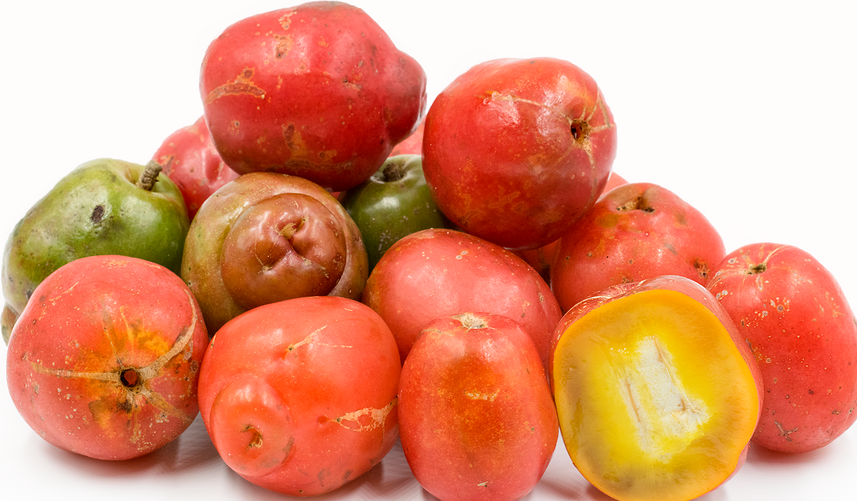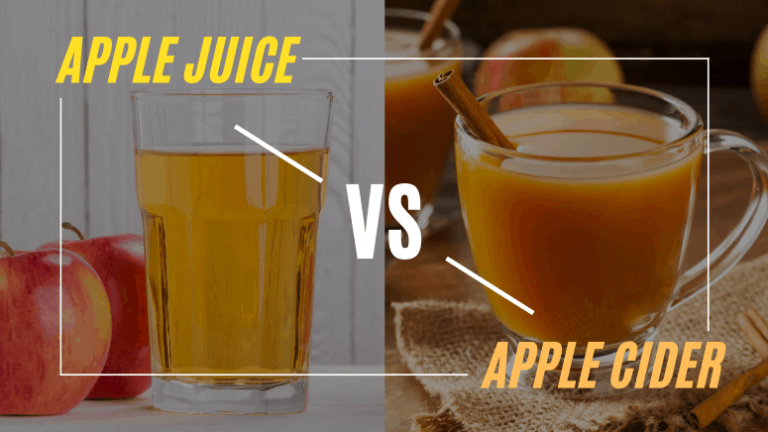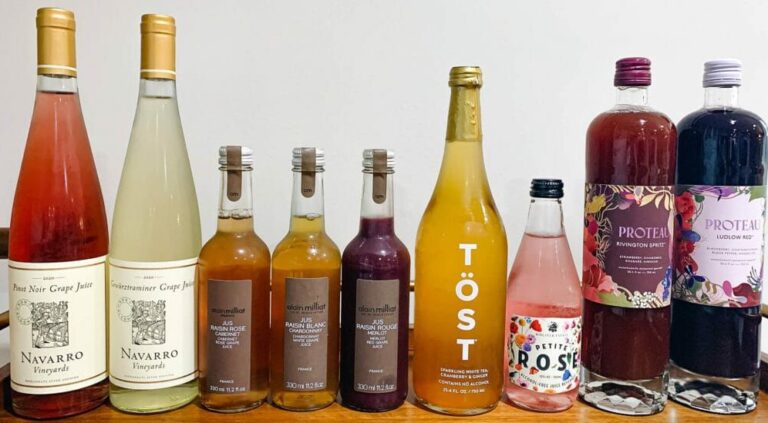Discovering the Delicious World of Jocote: A Tropical Fruit with a Unique Flavor
Welcome to the tropical paradise of jocote! Prepare your taste buds for a mouthwatering adventure as we dive into the delicious world of this unique fruit. With its vibrant flavors and rich cultural history, jocote has captured the hearts (and palates) of those fortunate enough to experience its tantalizing allure.
But what exactly is jocote? Where can you find it? And why should you add it to your culinary repertoire? Join us as we embark on a journey through the names, distribution, description, history, culinary uses, cultivation, and where to find this delectable gem. Get ready to discover why jocote is quickly becoming one of nature’s most sought-after treasures!
Names and Distribution
Jocote, also known as Spondias purpurea, is a tropical fruit that goes by various names depending on the region. In Central America, it is commonly referred to as jocote or jobo, while in other parts of Latin America it may be called ciruela or hog plum. The distribution of the jocote tree spans across countries such as Mexico, Belize, Guatemala, Honduras, El Salvador, Nicaragua, Costa Rica, Panama, Colombia and Venezuela.
This delicious fruit can thrive in warm climates with fertile soil and ample rainfall. It is primarily found growing wild in forests but can also be cultivated in home gardens or orchards. Due to its popularity and versatility in culinary applications,
jocotes are now being exported to international markets where they are gaining recognition for their unique flavor profile.
Names of Jocote
Jocote, the tropical fruit with a unique flavor, goes by many names across different regions. In Latin America, it is commonly known as jocote, but it also has various local monikers like mombin in Jamaica and mangiroto in Costa Rica. These different names reflect the rich cultural diversity of the places where this delicious fruit grows.
The name “jocote” itself comes from the Nahuatl word xōcotl, which means sour or acid. This perfectly describes the tangy taste that characterizes these small fruits. So whether you call it jocote, mombin, or mangiroto, one thing remains constant – its delightful flavor that makes it an irresistible treat for fruit enthusiasts everywhere.
Distribution of Jocote
Jocote, a tropical fruit known for its unique flavor, is widely distributed across various regions of the world. It can be found in Central America, particularly in countries like Costa Rica, Nicaragua, and Guatemala. In these areas, jocote is a popular fruit that grows abundantly due to the warm and humid climate.
Outside of Central America, jocote can also be found in other parts of the world with similar climatic conditions. Some countries in South America, such as Colombia and Brazil, have also embraced this delicious fruit. Additionally, certain regions in Africa and Asia have started cultivating jocote trees to enjoy its delectable taste.
The distribution of jocote showcases its adaptability to different climates and soils around the globe. Whether you’re exploring Central America or venturing into other continents rich with tropical landscapes, there’s a chance you might stumble upon this delightful fruit!
Description
Jocote, also known as Spondias purpurea, is a tropical fruit that entices with its unique flavor and vibrant appearance. Its physical characteristics are distinctive – small in size and oval-shaped, with a thin outer skin that ranges from green to yellow when ripe. The flesh of the jocote is juicy and succulent, surrounding a large seed at the center.
When it comes to taste, jocote has an intriguing mix of flavors. It can be tangy or sweet, depending on its level of ripeness. Some describe it as having hints of pineapple or mango, while others compare it to a combination of plum and lime. Each bite offers a burst of juiciness coupled with a refreshing tartness that keeps you reaching for more.
Beyond its delightful taste, jocote also packs nutritional benefits. It is rich in vitamin C and antioxidants which help boost your immune system and fight against free radicals. Additionally, this tropical fruit contains fiber which aids digestion and promotes overall gut health.
Physical Characteristics of Jocote
Jocote, the tropical fruit with a unique flavor, boasts distinctive physical characteristics that make it easily recognizable. This small fruit is typically round or oval-shaped, measuring about 1 to 2 centimeters in diameter. Its smooth skin comes in various shades of yellow, orange, or red when ripe. Don’t be fooled by its unassuming appearance though; once you take a bite into this delightful fruit, you’ll discover an explosion of flavors!
The flesh of jocote is juicy and slightly fibrous with a vibrant yellow or orange color. Inside the thin outer layer lies a large seed that accounts for most of the size of the fruit. The skin can be easily peeled away to reveal the succulent flesh underneath. The taste and texture vary depending on the ripeness of the jocote – from tangy and sour when unripe to sweet and mildly tart when fully matured. These charming physical attributes add to its appeal as a delicious tropical treat!
Taste and Flavor Profile of Jocote
When it comes to flavor, jocote is truly a tropical delight. This unique fruit offers a taste that is both sweet and tangy, making it an exciting addition to any dish or snack. The flesh of the jocote has a slightly firm texture, similar to that of a plum, and its vibrant yellow-orange color adds an appealing visual element.
As you take your first bite into a jocote, you’ll be greeted with its refreshing sweetness. The natural sugars in this fruit give it a pleasant sweetness that is not overpowering. But what sets jocote apart is its tanginess. As you continue chewing, you’ll notice hints of acidity that add a zesty kick to the overall flavor profile. It’s this subtle balance between sweet and tangy that makes jocote such an intriguing fruit to savor.
Nutritional Value and Health Benefits of Jocote
Jocote may be small in size, but it packs a nutritional punch! This tropical fruit is not only delicious but also offers several health benefits. It is low in calories and fat, making it a great choice for those watching their weight. Jocote is also rich in dietary fiber, which aids digestion and promotes bowel regularity.
Additionally, jocote contains essential vitamins and minerals such as vitamin C, vitamin A, potassium, and calcium. Vitamin C boosts the immune system and acts as an antioxidant to protect against cell damage. Vitamin A supports healthy vision while potassium helps maintain proper heart function. Calcium contributes to strong bones and teeth.
With its impressive nutrient profile, including antioxidants and vital vitamins, jocote can be a valuable addition to your diet for overall health and wellbeing!
History and Cultural Significance
The history and cultural significance of jocote is as vibrant and diverse as the fruit itself. With roots dating back centuries, this tropical delicacy has played a significant role in the lives of many cultures.
Jocote has been a staple food in Central America for generations, with indigenous communities cherishing its unique flavor and health benefits. Its history can be traced back to ancient civilizations that valued its delicious taste and recognized its nutritional value. Today, jocote continues to hold a special place in traditional cuisine, celebrated during festivals and gatherings where it symbolizes abundance and prosperity.
Across different regions, jocote is not only enjoyed as a culinary delight but also holds cultural significance beyond the dining table. In some areas, it is believed to bring good luck or ward off evil spirits. Additionally, jocote leaves have been used for medicinal purposes by various cultures for their healing properties. As we explore the world of jocote further, we’ll uncover more about how this incredible fruit has shaped cultures throughout history.
Historical Background of Jocote
Jocote, a tropical fruit with a unique flavor, has a fascinating historical background that dates back centuries. Native to Central America and parts of South America, the jocote tree is believed to have been cultivated by ancient Mayan civilizations. These ancient cultures not only cherished the delicious fruit but also considered it sacred.
Throughout history, the jocote fruit has played an important role in various indigenous communities. It was often used in religious ceremonies and rituals as an offering to gods and ancestors. Its significance extended beyond its culinary uses, becoming deeply intertwined with cultural traditions and beliefs. Today, the historical legacy of jocote continues to be celebrated in many regions where it grows abundantly.
Cultural Significance and Uses in Different Regions
Jocote, with its distinct flavor and vibrant color, has a rich cultural significance in various regions around the world. In Central America, this tropical fruit holds a special place in traditional cuisine and celebrations. It is often used to make refreshing beverages like jocote fresco or incorporated into savory dishes such as salsas and pickled salads.
In Mexico, jocotes are celebrated during the annual Jocote Festival where locals come together to enjoy delicious treats made from this unique fruit. From candies and jams to ice creams and cocktails, the versatility of jocote shines through in Mexican culinary traditions. Similarly, in Caribbean countries like Jamaica and Puerto Rico, jocotes are featured prominently in local recipes such as chutneys and sauces that add a tangy twist to meals. The cultural significance of jocote extends far beyond its taste – it represents community gatherings filled with laughter, shared memories, and the joy of discovering new flavors.
Culinary Uses and Recipes
When it comes to the culinary world, jocote is a tropical fruit that offers endless possibilities. From traditional dishes to modern creations, this unique fruit can bring a burst of flavor to any recipe. Its tangy and slightly sweet taste adds an exciting twist to both savory and sweet dishes.
In traditional cuisine, jocote is often used in salsas, chutneys, and pickles. The tartness of the fruit pairs perfectly with spicy peppers and onions, creating a mouthwatering condiment that complements grilled meats or enhances the flavors of tacos and empanadas. On the sweeter side, jocote can be incorporated into desserts like jams, jellies, or even ice cream for a refreshing treat on hot summer days. With its versatility in both sweet and savory recipes, it’s no wonder that jocote has become a beloved ingredient in kitchens around the world.
Traditional and Modern Culinary Applications
Jocote, with its unique flavor and versatile nature, has found its way into both traditional and modern culinary applications. In traditional cuisine, jocote is often used in savory dishes like stews and salsas. Its tangy taste adds a vibrant kick to these dishes, elevating the flavors to new heights.
In more modern cooking, jocote can be seen making appearances in innovative recipes such as salads, desserts, and even cocktails. Its sweet yet tart flavor pairs well with a variety of ingredients, making it an exciting addition for chefs looking to experiment with different flavors and textures. Whether you prefer classic or contemporary cuisine, jocote offers endless possibilities for culinary creativity!
Delicious Recipes Featuring Jocote
Jocote, with its unique flavor and tropical charm, can add a delightful twist to various recipes. From traditional dishes to modern twists, this versatile fruit is a culinary delight waiting to be explored.
In savory dishes, jocote’s tangy and slightly sweet taste pairs well with grilled meats or vegetables. Try adding sliced jocotes to salads for an unexpected burst of flavor or incorporate them into salsas for a zesty kick. For those with a sweet tooth, jocote shines in desserts like pies, tarts, and jams. Its vibrant color and refreshing taste make it the perfect addition to ice creams or sorbets as well. Get creative in the kitchen and let your imagination run wild – there are endless possibilities when it comes to incorporating jocote into delicious recipes.
With each bite bursting with tropical goodness, these recipes will transport your tastebuds straight to paradise! So why not give them a try? Discover the magic of jocote by experimenting with these mouthwatering creations that showcase its incredible flavors in new and exciting ways. Whether you’re looking for something savory or indulging your sweet cravings, there’s no doubt that jocote will take your culinary adventures to the next level!
Exploring Jocote Varieties and Cultivation
Jocote, a tropical fruit with a unique flavor, offers an array of delightful varieties and cultivation options to explore. From its vibrant colors to its tantalizing taste, jocote is truly a treasure for any fruit enthusiast.
When it comes to jocote varieties, there is no shortage of choices. From the sweet and juicy Jocote de Corona to the slightly tangy Marañón de Costa Rica, each variety presents its own distinct characteristics that make it worth trying. Whether you prefer your jocotes green or ripe, small or large, there is undoubtedly a variety out there that will suit your palate.
Cultivating jocote trees can be a rewarding experience for those who want to enjoy this delicious fruit right from their backyard. These trees thrive in warm climates with well-drained soil and plenty of sunlight. With proper care and maintenance, you can watch these trees grow into beautiful additions to your garden while enjoying their bountiful harvests year after year.
Different Varieties of Jocote
Jocote, the tropical fruit with a unique flavor, comes in different varieties that delight taste buds around the world. From sweet to tangy and everything in between, each variety offers its own distinct characteristics.
One popular variety is known as Jocote de Corozo, which has a vibrant yellow color and a slightly acidic taste that pairs perfectly with spicy dishes. Another variety called Jocote de Mico is smaller in size but packs a powerful punch of sweetness. And let’s not forget about Jocote de Marañon, which has a deliciously tart flavor reminiscent of cranberries.
With so many varieties to choose from, there’s always something new and exciting to discover when it comes to jocotes. Whether you prefer the tangy notes of Jocote de Corozo or the sweet juiciness of Jocote de Mico, these fruits are sure to satisfy your cravings for something truly tropical and unique. So go ahead and explore the wonderful world of jocotes!
Growing and Cultivating Jocote Trees
Growing and cultivating Jocote trees is a rewarding experience for tropical fruit enthusiasts. These beautiful trees thrive in warm climates and can be grown in both backyard gardens or larger orchards. To start growing your own Jocote tree, you’ll need to find a sunny spot with well-draining soil. It’s important to provide regular watering during the dry season and occasional fertilization to ensure healthy growth.
Once established, Jocote trees require minimal maintenance but may benefit from pruning to maintain shape and encourage better fruit production. With patience and care, you’ll soon be rewarded with an abundant harvest of delicious Jocotes that you can enjoy right from your own backyard! So why not give it a try and embark on this exciting journey of growing your very own Jocote tree?
Where to Find and Buy Jocot’e
Jocot’e, the tropical fruit with its unique flavor, is a true culinary gem. But where can you find and buy this delicious fruit? Luckily, jocot’e can be found in both local markets and international grocery stores.
In many regions where jocot’e is grown, such as Central America and parts of South America, you can easily find fresh jocotes at local farmers’ markets or street vendors. These vibrant fruits are often sold by the kilo or pound, allowing you to stock up on your favorite varieties. If you’re lucky enough to live in an area with a large Latin American community, specialty stores may also carry jocotes. Additionally, some online retailers offer frozen or preserved versions of the fruit for those who don’t have access to fresh options. So whether it’s from a bustling market or an online store, finding and buying jocot’e has never been easier!
Local and International Availability
Jocot’e, with its unique flavor and tropical charm, may seem like an exotic fruit that is difficult to find. However, this delectable fruit is surprisingly accessible both locally and internationally.
Locally, jocotes can be found in abundance throughout tropical regions where they are native. Farmers markets and local grocery stores often carry fresh jocotes during the peak season. Additionally, many countries have their own variations of jocote-based products such as jams, candies, and even alcoholic beverages.
Internationally, the availability of jocot’e may vary depending on your location. However, thanks to globalization and increased interest in diverse cuisines, it is becoming easier to find jocotes in specialty stores or online retailers that specialize in exotic fruits. So whether you’re craving a taste of the tropics or looking to explore new culinary possibilities with this delightful fruit – finding jocot’e has never been more exciting!
Tips for Purchasing and Storing Jocot’e
When it comes to purchasing and storing jocot’e, there are a few tips to keep in mind. Look for jocotes that have a vibrant color and are free from blemishes or mold. The fruit should feel slightly firm when gently squeezed. If possible, buy jocotes that still have their stems attached, as this indicates freshness.
Once you’ve brought your delicious jocotes home, store them at room temperature until they ripen. It’s best not to refrigerate them unless they are fully ripe and ready to be eaten. To speed up the ripening process, place the jocotes in a paper bag with a banana or apple – these fruits release ethylene gas which helps accelerate ripening. Enjoy your ripe jocotes within a few days for optimal flavor and texture!
Conclusion
In this blog post, we have explored the delicious world of jocot’e, a tropical fruit with a unique flavor. We learned about its different names and distribution, as well as its physical characteristics and taste profile. We also discovered the nutritional value and health benefits that jocot’e offers.
Furthermore, we delved into the history and cultural significance of jocot’e, discovering its roots in ancient civilizations and its diverse uses in different regions. From traditional dishes to modern culinary applications, jocot’e has found its way into various cuisines around the world.
We also discussed different varieties of jocote and how to cultivate these trees for a bountiful harvest. Whether you’re an avid gardener or simply interested in trying this exotic fruit, understanding how to grow your own can be an exciting endeavor.
We explored where to find and buy jocote both locally and internationally. With some tips on purchasing and storing this delicate fruit, you’ll be able to enjoy it at its peak freshness.







